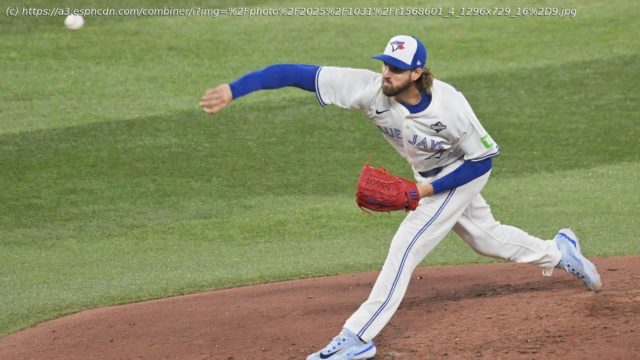It looks like a fastball, until you swing and miss. Here’s why the splitter is sweeping baseball.
TORONTO — In Game 6 of the World Series on Friday, two of the foremost practitioners of the pitch that has defined October will duel at Rogers Centre. Los Angeles Dodgers right-hander Yoshinobu Yamamoto is trying to save his team’s season, and Toronto Blue Jays right-hander Kevin Gausman is trying to win his franchise’s first championship in more than 30 years, and both will rely heavily on the split-fingered fastball, an offering that for almost 20 years teetered on the brink of extinction in Major League Baseball.
The rise of the splitter over the past half a decade — fueled by the emergence of elite pitching from Japan, where the the offering is a standard part of nearly every pitcher’s arsenal, and the softening on its use by MLB teams that at one point had forbid the pitch, fearful that it directly led to elbow injuries — has transformed baseball even more than the cutter and sweeper once did. Because it’s a superior pitch to all of them.
„If you can throw it near the strike zone“, Clayton Kershaw said, „it’s the best pitch in the game.“
In recent years, Kershaw began throwing a split-change, finally finding a comfortable variation of a changeup after spending his 18-year future Hall of Fame career in search of one. He is far from alone. This postseason, 32 pitchers, representing nearly a quarter of playoff hurlers, have thrown splitters. Since the advent of pitch tracking in 2008, the highest percentage of splitters thrown among overall pitches in October was 3.2% last year. Most seasons, it ranged between 0.2% and 2%.
This October, 6.8% of all pitches have been splitters, a staggering number that reflects the game’s wholesale embrace. It’s not just Gausman (who has thrown the pitch 41.4% of the time in the playoffs) and Yamamoto (24.7%). Toronto rookie Trey Yesavage dominated the Dodgers with his splitter in Game 5. Shohei Ohtani, who will pitch in Game 7 if the Dodgers win Friday’s battle of the splits, throws a vicious one. Blue Jays closer Jeff Hoffman could set off a celebration with one. The same goes for Dodgers closer Roki Sasaki, whose splitter dances in all directions with perilously low spin, like a souped-up knuckleball.
„It’s kind of one of the few pitches I thoroughly believe a hitter can know it’s coming and still get out“, Gausman said. „I’ve always felt like the changeup is the best pitch in the game because it looks like a fastball, and anything that looks like a fastball and isn’t is really good.






